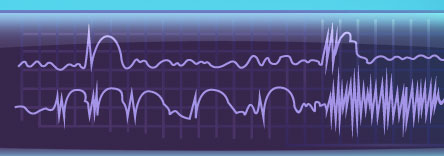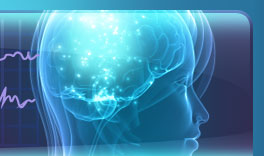
 |
 |
 |
| Home | About Epilepsy | Epilepsy Monitoring | Epilepsy Surgery | Information | Gallery | Contact Us | Terms and Policies |
|
Types of SeizuresThere are many different types of seizures, some more difficult to recognise than others.
These are seizures originating in a specific part of the brain, beginning with an abnormal burst of electrical activity in a restricted area of brain tissue. Most arise from the temporal or frontal lobes. Head injury, brain infections, stroke and brain tumors are common causes of partial seizures. In some cases, hereditary factors are also important. In the majority of cases though, no cause can be identified.
Types of focal seizures include -
Lip smacking and rubbing the hands together are the most common seizure type in temporal lobe epilepsy. In some individuals especially when seizures have occurred for more than 5 years, there may be problems with memory. When not controlled with anti-epilepsy medication, temporal lobe seizures can often be controlled with surgery. A temporal lobectomy is the most common and successful form of epilepsy surgery.
This used to be known as a Grand Mal seizure and is what the average person thinks of when epilepsy is mentioned. A generalised seizure affects the whole brain simultaneously and usually involves jerking of the body with loss of consciousness and occasionally incontinence.
Types of generalised seizures include - Absence seizures: Used to be known as a Petit Mal seizure and is commonly called a starring seizure or blank spell. It affects the whole brain simultaneously but does not usually involve any jerking and will last for less than 20 seconds. It is commonly only seen in children but may occur in adults.
Tonic seizures: Tonic seizures cause the muscles to stiffen, but no twitching occurs. These seizures usually affect the back, arms, and legs. People who have tonic seizures lose consciousness for about 10 seconds.
Clonic seizures: Clonic seizures cause muscles to jerk on both sides of the body, but the body does not go rigid as in tonic seizures. This type of seizure is rare and affects mostly young children.
Myoclonic seizures: Myoclonic seizures may cause the muscles to jerk and twitch in a part of the body such as an arm or leg, or in the whole body.
Atonic seizures: Atonic seizures cause a complete loss of muscle tone. These seizures are also called drop attacks because people who have them will suddenly lose consciousness and collapse. After a period as short as 10 seconds, the person regains consciousness and can stand and walk again. Atonic seizures are sometimes mistaken for fainting. But a faint begins slowly and can be avoided by lying down. Atonic seizures can also affect a single part of the body such as the jaw and neck. In this case, the jaw will briefly go slack and the head will drop.
Tonic-clonic seizures: Tonic-clonic seizures cause a mixture of symptoms; the seizure may begin with a tonic phase in which the muscles suddenly go rigid. After about 30 seconds, the seizure may enter the clonic phase in which the muscles go rigid and relax in spasms. Bladder and bowel control may be lost. The throat tightens so that breathing makes a high-pitched sound called stridor. Some people have an aura before a tonic-clonic seizure . These seizures usually last two or three minutes. They are followed by a brief sleep-like state. People feel very tired and confused after tonic-clonic seizures. Ref: Orrin Devinsky, MD (A Guide to Understanding and Living with Epilepsy) |
| Copyright | | | Disclaimer |